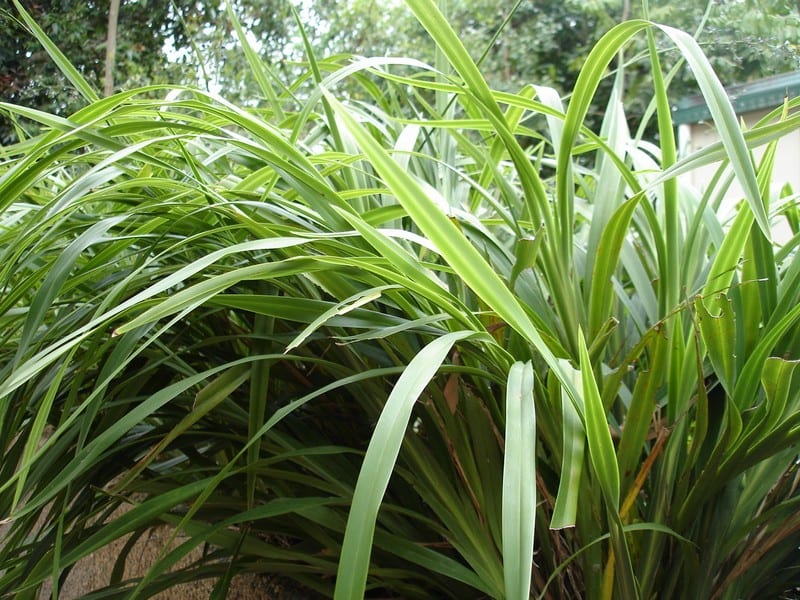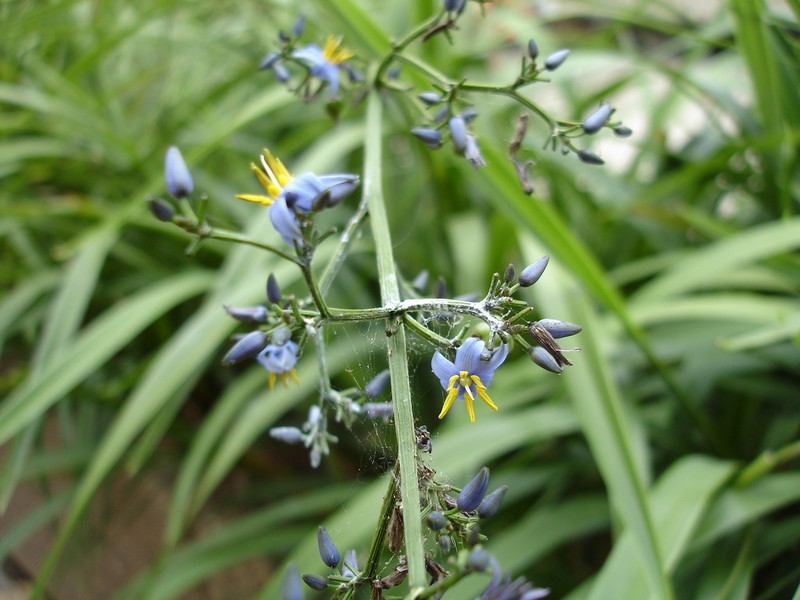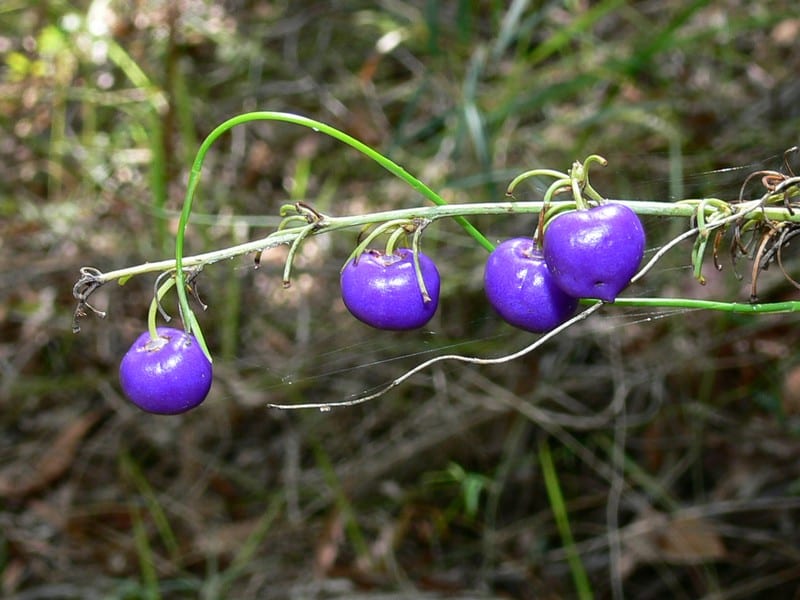Blue flax-lily, paroo lily
Dianella caerulea, Fam. Hemerocallidaceae








Flax-lilies are hardy long-lived, tufted perennial herbs with creeping underground stems (rhizomes) and fibrous or tuberous roots. With several recognised varieties, D. caerulea is the most common and largest, to 2m tall and often forming large clumps. Dianella is the diminutive of Diana, Roman goddess of hunting and queen of the woods. Caerulea, is derived from the Latin caeruleus, meaning dark blue.
| Weed Category: | |
| Weed: | No |
| Form or habit: | Herb |
| Family: | Hemerocallidaceae |
| Leaf: | Simple Basal Long narrow, 100-750 x 3-25mm, folded lengthwise, with closed basal sheath; margins finely toothed (serrated), as is the midrib on the underside. |
| Flower conspicuous: | Conspicuous |
| Flower colour: |
Blue |
| Flower description: | Pale to dark blue star shaped flowers, 6-12mm long, borne on long stems in any month but especially in spring and summer. |
| Fruit conspicuous: | Conspicuous |
| Fruit colour: |
Blue, Purple |
| Fruit: | Fleshy |
| Fruit description: | Fleshy, edible, vibrant purple-blue, slightly flattened berries, 7-12 x 8-15mm, containing 6-12 shiny black seeds. |
| Habitat: | Beach scrub, gallery (riverine or riparian) forest, littoral rainforest, open forest, woodland. |
| Distribution | NE Queensland to southern NSW. |
| Food source for: | Grey shrike-thrush, ground parrot, Lewin's honeyeater. Shoots eaten by the pied currawong. |
| Toxicity: | No toxicity known |
| Origin: | Australia |
| Notes: | |
| Information sources: | Don Perrin. (1990) Dictionary of Botanical Names., Melzer R. & Plumb J. (2007) Plants of Capricornia. |